
With Labor Day behind us and the kids back in school, Halloween is coming up fast. People have begun decorating their homes with ghosts, goblins, tombstones, spider webs, witches, skeletons, and assorted ghouls. (See the most popular Halloween costumer in your state.)
Of course, no Halloween season is complete without pumpkins. We carve them up as jack-o-lanterns or use them to make pie, cheesecake, muffins, even soup. Both for decoration and on our tables, they’re the emblematic vegetable of the season.
Pumpkins – a variety of winter squash – are grown in every state, but some states have more prolific yields than others. To find the states that produce the most pumpkins, 24/7 Tempo used data provided by the U.S. Department of Agriculture’s National Agricultural Statistics Service. States were ranked by the gauge CWT, or hundredweight, used to define the quantities of certain commodities being bought and sold.
For whatever reasons, pumpkin production soared 26% in 2021 to 16.7 million CWT, from 2020. Planted area was estimated at 74,400 acres, an increase of 13%. The total area harvested, at 69,600 acres, was up 11% from the previous year. The value of the pumpkins totaled $233 million, 27% more than the prior season.
Illinois was the national leader by far in terms of total production, acres planted, and acres harvested in 2021. Other Midwestern states on the list include Indiana, Michigan, and Ohio. (These were 2021’s best cities for pumpkin lovers.)
Every state on the list except for Michigan increased the area planted in 2021 from 2020. North Carolina and Ohio doubled production, and Indiana almost doubled its output. Only Oregon and Virginia recorded reduced production in 2021.
Click here to see the 13 states that grow the most pumpkins
The USDA reported that there were no problems from pests or mold in Illinois in 2021, leading to one of the state’s most robust growing years. Pumpkin growers in Indiana reported generally favorable weather, according to the USDA. A good start to the season in Pennsylvania was scuttled by excessive rain in August and September. Some areas reported the soilborne disease, phytophthora, which can cause the crop to collapse in the field.
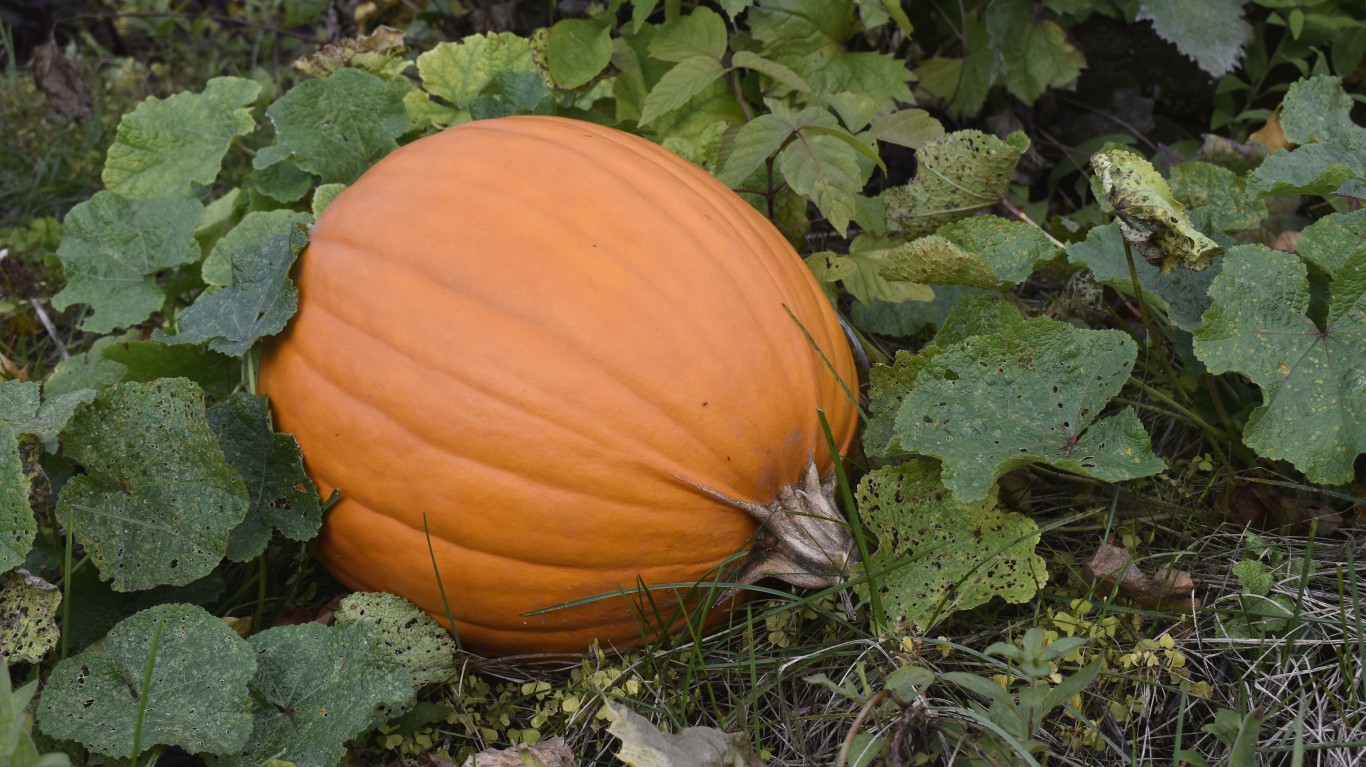
13. Wisconsin
> Total production by 1,000 CWT: 276
> Total acres planted: 2,700
> Total acres harvested: 2,400
[in-text-ad]
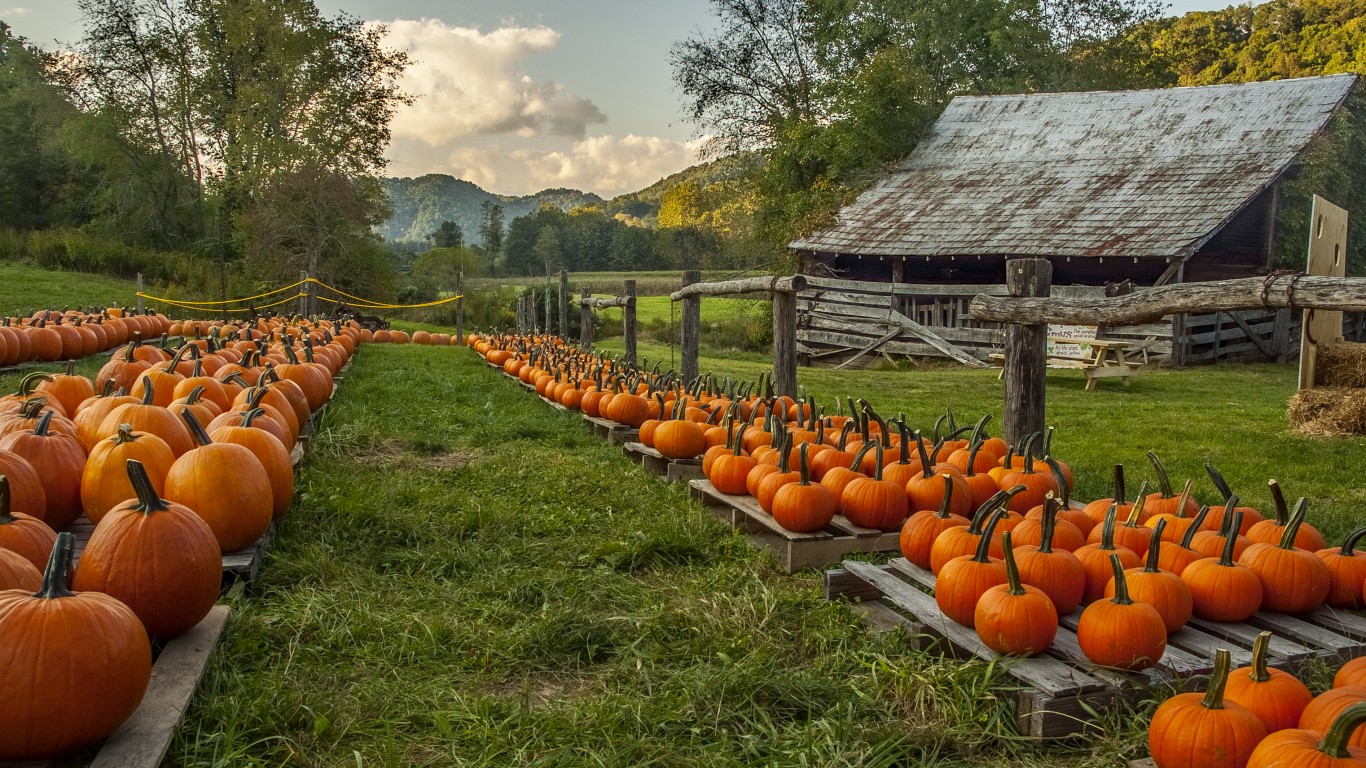
12. North Carolina
> Total production by 1,000 CWT: 292.3
> Total acres planted: 3,800
> Total acres harvested: 3,700
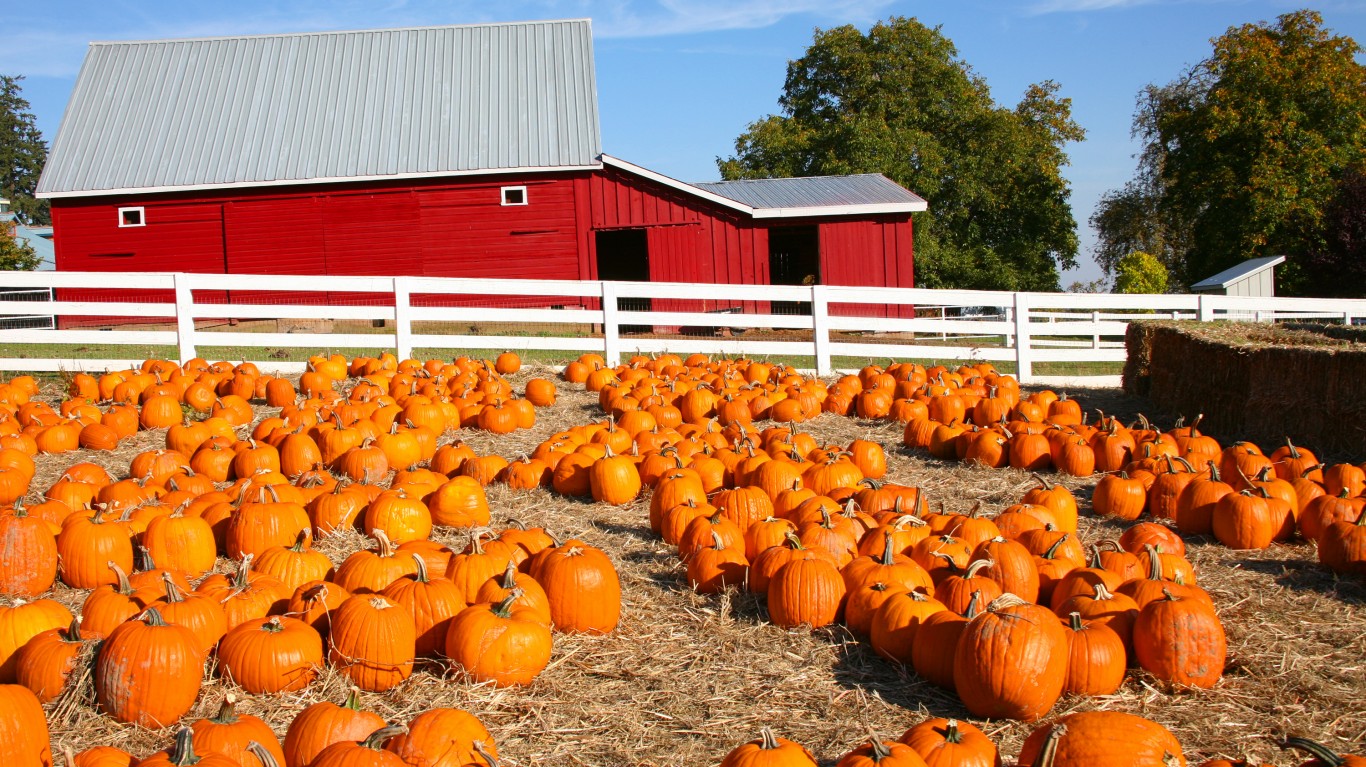
11. Oregon
> Total production by 1,000 CWT: 490
> Total acres planted: 2,100
> Total acres harvested: 2,000
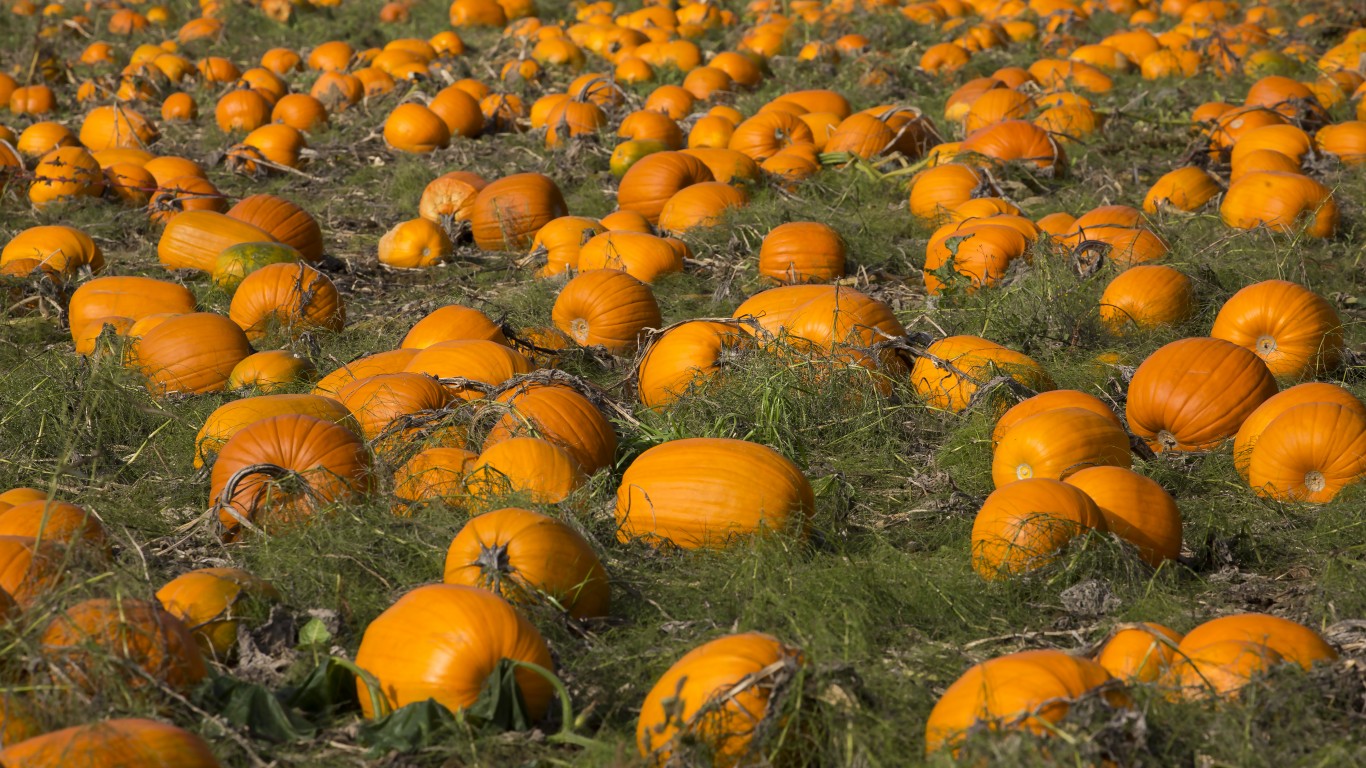
10. Washington
> Total production by 1,000 CWT: 607.5
> Total acres planted: 3,000
> Total acres harvested: 2,700
[in-text-ad-2]
9. Ohio
> Total production by 1,000 CWT: 722
> Total acres planted: 3,900
> Total acres harvested: 3,800

8. New York
> Total production by 1,000 CWT: 765
> Total acres planted: 5,800
> Total acres harvested: 5,100
[in-text-ad]

7. Pennsylvania
> Total production by 1,000 CWT: 816
> Total acres planted: 7,300
> Total acres harvested: 6,800
6. Virginia
> Total production by 1,000 CWT: 822,5
> Total acres planted: 4,800
> Total acres harvested: 4,700
5. Michigan
> Total production by 1,000 CWT: 892.5
> Total acres planted: 5,600
> Total acres harvested: 5,100
[in-text-ad-2]

4. Texas
> Total production by 1,000 CWT: 1,080
> Total acres planted: 4,700
> Total acres harvested: 4,500

3. California
> Total production by 1,000 CWT: 1,567.5
> Total acres planted: 5,600
> Total acres harvested: 5,500
[in-text-ad]
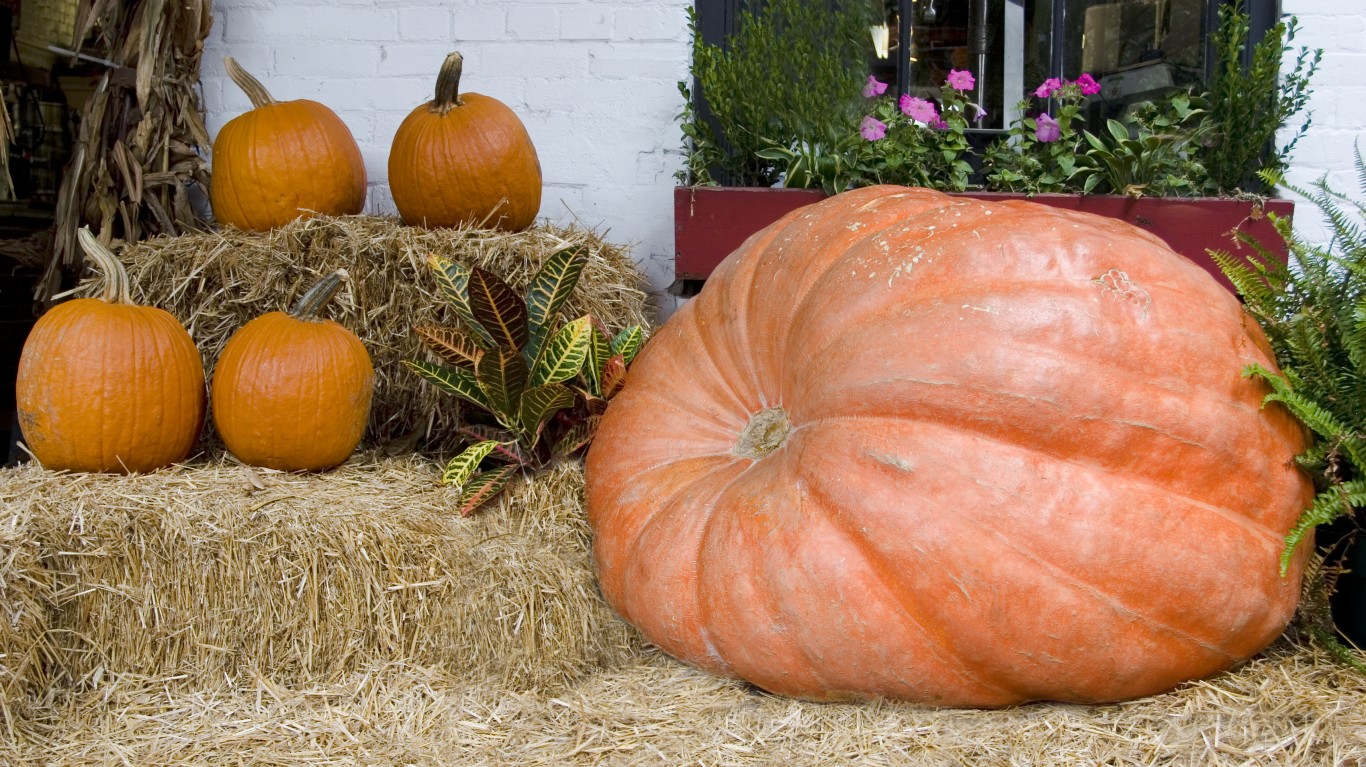
2. Indiana
> Total production by 1,000 CWT: 1,813
> Total acres planted: 7,700
> Total acres harvested: 7,400

1. Illinois
> Total production by 1,000 CWT: 6,519
> Total acres planted: 17,400
> Total acres harvested: 15,900
Thank you for reading! Have some feedback for us?
Contact the 24/7 Wall St. editorial team.
 24/7 Wall St.
24/7 Wall St.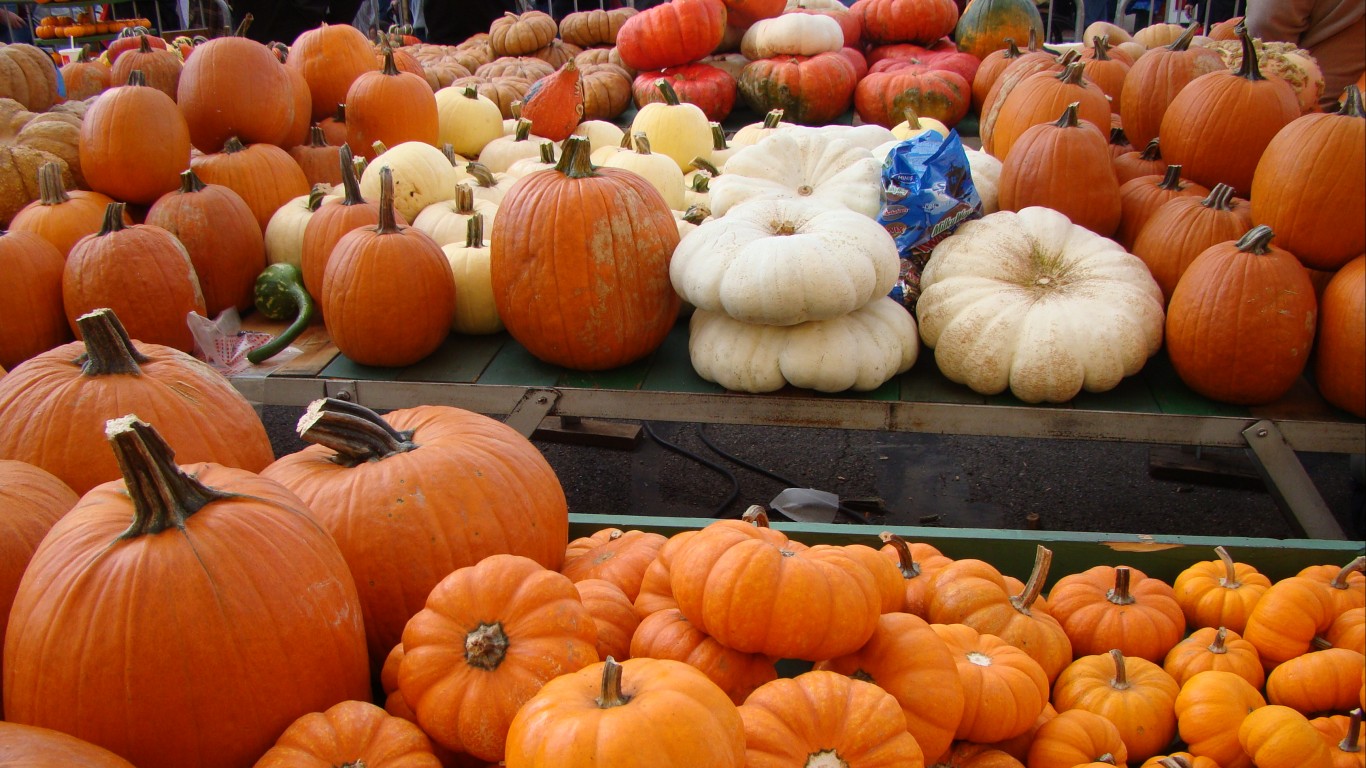

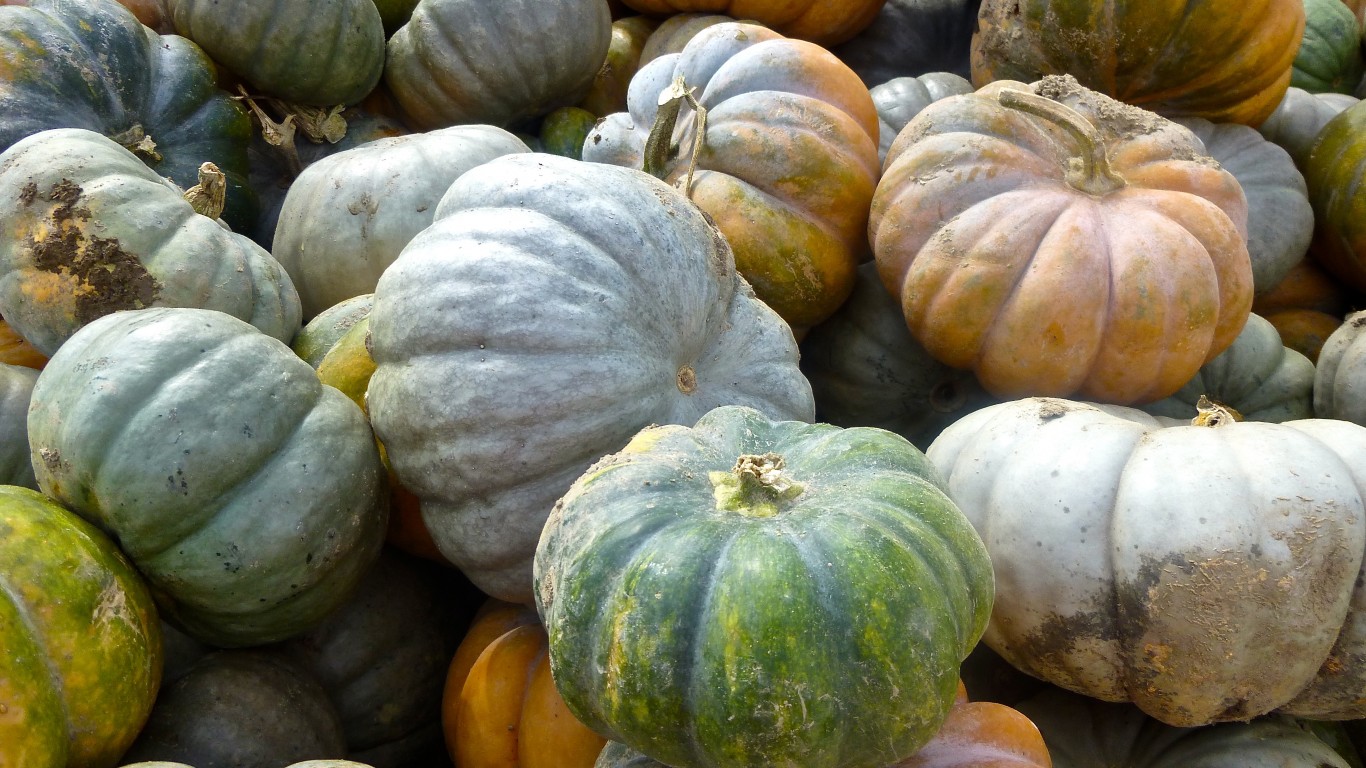
 24/7 Wall St.
24/7 Wall St.